#Indian aviation news
Explore tagged Tumblr posts
Text
Akasa joins the Priority bandwagon
Mumbai headquartered Low Cost Carrier (LCC) Akasa Air has launched “Akasa Priority” and joins the bandwagon of similar services offered by fellow carriers Air India Express, SpiceJet and market leader IndiGo. The passengers will be offered priority check-in, boarding and baggage service. The service is available in both domestic and international sectors. Akasa Air will have a Priority Check-in,…
#Akasa Air#Akasa Air priority#Akasa Air priority boarding#Indian Aviation#Indian aviation blogs#Indian aviation news
0 notes
Text



India vs Afghanistan Cricket World Cup 2023: Ashwin's Fate Hangs in Balance 🏏🏏🏏
🏏Cricket registration : https://cricket99.in/
⭐Full article : https://ipl201.com/cricketnews/1532/
India vs Afghanistan, Cricket World Cup Live Updates: Ravichandran Ashwin showcased his brilliance in the match against Australia. However, his place in the India XI against Afghanistan in their second match of World Cup 2023 on Wednesday remains uncertain. There's a possibility that Ashwin may be replaced by another pacer to strengthen the bowling attack.
#cricket#india#viratkohli#ipl2023#dream11#cricketid#ipl#gugobet#ashwin#aviator#world cup#world cup 2023#cricket news#indian cricket team#virat kohli#icc cricket world cup 2023
0 notes
Link
Touching the sky with glory. HAL Hands Over First LCA Tejas Twin Seater Aircraft To IAF.
This achievement places India among the exclusive group of nations that have successfully developed and deployed such advanced capabilities within their Defense Forces.
#hindustanaeronautics#indianairforce#aerospace#aviation#defence#military#makeinindia#nationbuilding#iaf#indian air force#hindustan aeronautics limited#hal#lca tejas#Air Power Beyond Boundaries#air power India#NEWS#iNDIAN NEWS#aerospace industry#AVIATION NEWS#BLOG#BLOGGER#NEWS BLOG
0 notes
Text
India’s $13.9 billion aviation industry—projected to cater to over 300 million domestically by 2030—is a ticking time bomb.
This July, in the sweltering heat at the Delhi High Court, additional solicitor general Aishwarya Bhati announced that new rules on pilot duty and rest periods would not be implemented this year after all. Introduced by the Directorate General of Civil Aviation (DGCA) in January, the rules were designed specifically to combat pilot fatigue. They were set to take effect in June, but were abruptly retracted. The hearing addressed a writ petition filed by the Federation of Indian Pilots (FIP), seeking clarity on when the new norms would be enforced. The DGCA’s response followed its request to airline companies in April for a tentative implementation timeline.
Concerns over pilot fatigue had been mounting in the months leading up to the announcement of the new Flight Duty Period, Flight Time Limitations, and Prescribed Rest Periods by the DGCA. The urgency deepened in November 2023 when a 37-year-old Air India pilot, Captain Himanil Kumar, collapsed at Delhi Airport while training to fly the airline's Boeing 777 fleet, and later died at the hospital. Kumar was the second Indian pilot to die on duty within three months; in August, Captain Manoj Subramanyam, a 40-year-old IndiGo pilot, suffered a fatal cardiac arrest just minutes before his flight from Nagpur.
These back-to-back tragedies raised alarm in the industry. “Another young Indian pilot passed away today due to a suspected cardiac event,” reportedly tweeted Captain Shakti Lumba, a retired IndiGo VP who is now the president of the Professional Pilots Society in India (His tweet was since deleted.) “If this doesn’t convince the DGCA, civil aviation ministry, and airlines to urgently address the stress, fatigue, and anxiety among pilots, nothing will.”
The DGCA, India’s aviation watchdog, regulates the country’s Flight Duty Time Limitations (FDTL). At 13 hours of flight duty time, India’s FDTL is already demanding, but after the pandemic slowdown, increased route expansion and pilot shortages have forced many to fly beyond the recommended maximum of 60 hours a week, exacerbating crew exhaustion. The DGCA finally responded to the growing crisis by revising FDTL norms in January 2024.
The new guidelines increased weekly rest periods from 36 to 48 hours and introduced quarterly fatigue reports. Its scheduled implementation on June 1, 2024, was pushed back due to pressure from operators. An airline CEO, speaking anonymously to the Economic Times in January, claimed the proposed regulations would require a 20 percent increase in pilot numbers, which would escalate expenses and lead to huge numbers of flight cancellations. Still, the DGCA held firm on the FDTL implementation deadline till early March. By the end of the month, however, it appeared to have yielded to influence from the airline lobby. A notice on the regulator’s website announced the deadline had been deferred, without providing a reason or setting a new date.
The pilot fatigue problem isn’t unique to India. In January, two pilots for Indonesia-based Batik Air fell asleep for 28 minutes mid-flight, causing their plane to veer off course between Sulawesi and Jakarta. In April, unionized Virgin Atlantic pilots in the UK voted 96 percent in favor of pursuing an industrial action in response to rising fatigue. Earlier, the CEO of Wizz Air UK faced a backlash for urging crew members to push through their fatigue to avoid flight cancellations. In May, senior pilots at Virgin Australia raised safety concerns, claiming rostering systems were pushing them "to the limits.”
But in India, the belief that overwork and fatigue are not just acceptable but essential has become entrenched across industries. The aviation crisis is just the tip of the iceberg; it is the tech industry that is leading the charge. Last year, Infosys cofounder Narayana Murthy suggested that Indian youth should work 70 hours a week for the nation's development. Murthy’s advice came up at the Indian Parliament on the first day of its winter session and found support from a list of influential Indian tech leaders, including Bhavish Aggarwal, founder of India’s first AI unicorn, Ola Krutrim; Ayushmaan Kapoor, cofounder of the AI-powered customer platform Xeno; and even veterans like Sajjan Jindal, CEO and MD of JSW Group, and Vinod Khosla of Sun Microsystems. Almost all of them justified the extended work hours, which far exceed the maximum eight to nine hours per day stipulated by the International Labour Organisation and the Indian Labour Code, as necessary for strengthening India’s economy. “We have to make India an economic superpower that we can all be proud of,” Jindal wrote on X. He cited Indian prime minister Narendra Modi, “who works 14-16 hours everyday,”as a model. In July this year, the Karnataka State IT/ITeS Employee Union said the state government had plans to increase working hours in the sector from the current maximum of 10 hours (including overtime) to a staggering 14 hours a day. As the union planned massive campaigns to oppose the move, the labor minister stated that the push for the proposal had come from the companies.
The airline companies think they have a solution to the fatigue crisis: technology. IndiGo, India’s largest airline, announced it would be an “early adopter” of a wrist-worn fatigue-monitoring device it was developing with French defense and aerospace company Thales Group. The device can provide “detailed insights into demographic data, including routes, pairings, crew profiles, and more, going beyond traditional scheduling-focused biomathematical models,” the airline stated in a press release in September. The airline, which operates 2,000 flights daily and employs over 5,000 pilots, said the device would be rolled out after a proof-of-concept trial. No date for the rollout was announced.
Wearable activity trackers are not new to the aviation industry. IndiGo’s device sounds similar to Actiwatch, a now-discontinued line of research-grade actigraphs from Philips, used to monitor sleep patterns, study circadian rhythms, and track physical activity as part of an airline’s fatigue risk-management system. But they partly rely on performance tests and subjective measures, such as self-reporting, which often results in being targeted by the airlines, says Captain C. S. Randhawa, president of the Federation of Indian Pilots. Safety management systems on the whole tend to be neglected by operators and are viewed as an additional expense, says Captain Amit Singh of the NGO Safety Matters Foundation.
In May 2023, Air India launched safety management software called Coruson, as well as BAM (Boeing Alertness Model), a fatigue-mitigation tool integrated into its rostering system, which is used by airlines to create and manage pilot schedules. Coruson, developed by cloud software company Ideagen, centralizes, analyzes, and reports on safety-related data—such as incidents, hazards, and risk assessments. BAM, developed jointly by Boeing and the software company Jeppesen, predicts and manages pilot fatigue by analyzing flight schedules and performance data. These tools were designed to prevent the creation of fatiguing rosters and pairings, Air India CEO Campbell Wilson noted in an internal message to employees. The carrier also introduced two new digital tools for its crew—the Pilot Sector Report app, to help pilots easily submit information on flight performance, incidents, and observations post-flight; and DocuNet, a digital management system that facilitates the storage, retrieval, and sharing of documents (such as flight manuals, training records, and compliance documents).
Despite these measures, the airline was fined by the DGCA in March this year for violating FDTL limits and fatigue management rules. This May, Air India Express cabin staff called in sick en masse to protest against “mismanagement.” This followed a similar protest from the crew, mostly pilots, at Vistara airlines. Both Air India and Vistara are now owned by one of India’s largest conglomerates, the Tata Group, which took over the former from the Indian government in January 2022.
Twenty-five of those who called in sick at Air India Express were terminated. Others were reportedly served an ultimatum. Those sacked were later reinstated by the airline following an intervention by the chief labour commissioner. Nearly a week before, the regional labor commissioner of Delhi had allegedly written to the Tata group chairman pointing to “blatant violations of labour laws” and insisting the legitimate concerns of the cabin crew be looked into. According to CNBC, Vistara employees said the agitation at their end had to do with recent salary updates, which fixed pilot pay at 40 flight hours—down from 70. Protesting first officers claimed that the new salary structure would result in an almost 57 percent pay cut. Under the new terms they would also have to fly up to 76 hours to earn what they were previously earning at 70 hours.
To placate the pilots and get them back to work, management had assured them that salaries for the “extra working hours” would be credited once Vistara was integrated with Air India. At the time, two Air India pilots unions had written to the chairman of the company, saying that such issues were not isolated but systemic. Burnout was the other related issue, with many pilots complaining of inadequate rest and being pushed to their limits.
Captain Singh, a former senior manager at AirAsia, tells WIRED that such effects significantly increase the risk of accidents, but also adversely affect pilot health in the long run. Tail swaps—rushing between different types of aircraft to take off immediately after disembarking from another—have become more prevalent under the 13-hour rules, and can further contribute to exhaustion, as do hasty acclimatization and, most significantly, landing three, four, or more flights consecutively, which Captain Randhawa described as a “severe energy management challenge.”
In the 2024 “Safety Culture Survey” conducted by Singh’s Safety Matters Foundation in July, 81 percent of 530 respondents, primarily medium- to short-haul pilots, stated that bufferless rosters contribute to their fatigue. As many as 84 percent indicated concerns with the speed and direction of shift rotation. “That’s the problem with the new rostering softwares the operators are introducing,” a pilot from a private airline, who requested anonymity, says. “They’re optimizers designed to make pilots work every second of their 13-hour schedule, leaving no breathing room.” The buffer-deficient timetables push pilots to their limits, so any additional pressure—like unpredictable weather—can easily overwhelm them.
Solving this issue with wrist-worn fatigue-measuring devices is contentious. But that isn’t the only problem. A year since they were hyped up, the buzz around fatigue-management tech has all but fizzled out. There have been no updates from IndiGo about the wrist device. Neither IndiGo nor the Thales Group responded to requests to comment.
589 notes
·
View notes
Text
I swear this is the last time I bring up that air tanker in 2x14 voluntarily. The bottom line is, if you believe Tommy did fly that plane, that makes him not even superhero level cool, but Jonny Kim level cool. If you believe he didn't, then he's just as cool, always knowing a guy from all walks of line, ready to help out with whatever resource on hand the second Chimney says the word. At the end of the day, he saved the 118 and a bunch of civilians either way, and he did it again in S7 flying to that cruise ship. He'll always be our cool heroic pilot no matter what.
With that being said, I have some thoughts about the CAL FIRE line from the news reporter in that episode. If you're not interested, please read no further. And if you don't want to see this kind of posts at all but still want to read my other content, please block the tag #aviation realism.
I know Bobby said "217 incoming" when he saw that C-130, only the news reporter mentioned it was with CAL FIRE. That's why I suspect the CAL FIRE line was shoved in after the actual scenes were filmed, because they realized or someone explained to them how impractical and dangerous for an urban fire department to own a giant air tanker and just dump tons of water all over the city.
I saw the same technique utilized for the tsunami arc in S3. Anyone who has taken geography in high school can tell that in reality, there is no megathrust fault capable of generating Indian Ocean 2004 or Japan 2011 scale tsunami off the coast of SoCal. So where did the tsunami come from? In 3x02, before Sue asks Maddie to "triage" the dispatchers, you can hear once again a news reporter saying the tsunami is triggered by an earthquake off the coast of Alaska. This takes the fictional tsunami scenario from having zero basis in real life, to possible in extreme cases and greatly exaggerated for dramatic effect.
I thank whatever divine intervention or persistent technical advisor that made the CAL FIRE line possible.
2x14 was first aired on April 15, 2019. What you might not remember or realize is that something notable happened across the Atlantic on the very same day: the Notre-Dame fire. The entire world watched the cathedral burned for hours while over 400 firefighters all over Paris tried to contain the flame. A certain f...... former US president then suggested on Twitter that "perhaps flying water tankers could be used to put it out."
The French immediately responded by pointing out that dumping large amount of water from an aircraft at low altitude could "weaken the structure of Notre-Dame and result in collateral damage to the buildings in the vicinity." A retired FDNY battalion chief also told the media that water bombing would likely make the situation more dangerous, as civilians on the street might be hit if you miss the target.
The entire internet was clowning on that stable genius for such an innovative idea all afternoon. Imagine if 2x14 aired later that evening with not even a smaller single engine one, but a large 4 engine airtanker somehow belonging to the LAFD, that would come off extra stupid, even meme inspiring. But with the CAL FIRE line, they could at least claim that it was the extreme and rare circumstances requiring additional assistance from other agencies in the area, and it was not part of 911-verse LAFD's normal operation.
If the writers had done their homework beforehand and the CAL FIRE thing was always part of the script, good for them. If it was indeed shoved into the scene last minute, then they should thank their lucky stars.
I can already imagine the headache Bobby is going to have working on Hotshots as a consultant.
45 notes
·
View notes
Text
Malaysia has agreed in principle to resume the search for the wreckage of missing Malaysia Airlines flight 370, its transport minister said on Friday, more than 10 years after it disappeared in one of the world’s greatest aviation mysteries. MH370, a Boeing 777 carrying 227 passengers and 12 crew, vanished en route from Kuala Lumpur to Beijing on March 8, 2014. Transport Minister Anthony Loke said the proposal to search a new area in the southern Indian Ocean came from exploration firm Ocean Infinity, which had also conducted the last search for the plane that ended in 2018. The firm will receive $70 million if wreckage found is substantive, Loke told a press conference. “Our responsibility and obligation and commitment is to the next of kin,” he said.
7 notes
·
View notes
Text

IMAGES: ROKAF performs last Elephant Walk with its F-4 Phantom
Fernando Valduga By Fernando Valduga 03/09/2024 - 18:21in Military
The Air Force of the Republic of Korea (RoKAF) conducted on March 8 an impressive "elephant walk" (Elephant Walk) involving 33 aircraft, including poacher fighters F-35A, KF-16, F-15K and the former F-4E that are scheduled for retirement in June.
The F-4E Phantoms, leading the formation equipped with AGM-142H 'Popeye' and AGM-65D 'Maverick' air-to-ground missiles, and MK-82 air-to-ground pump. A total of 25 newer fighters followed, including the F-15K, KF-16, F-16, FA-50, F-5 and F-35A. Among them, two F-35As flew low over the Elephant Walk formation and then landed and joined the formation.
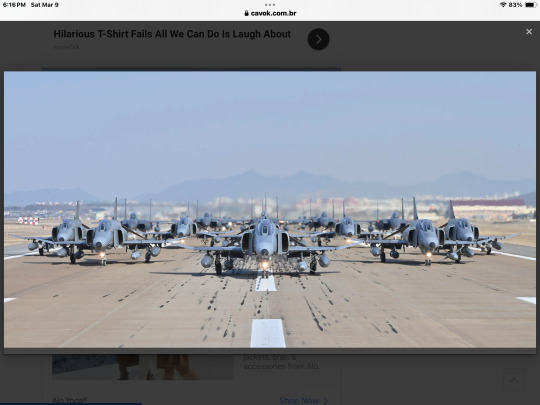
This demonstration at Suwon Air Base coincided with the annual Freedom Shield exercise, reinforcing the deterrence against North Korea's nuclear and missile threats.
A RoKAF official said that "this is the first time that all types of fighters belonging to the South Korean Air Force have participated".
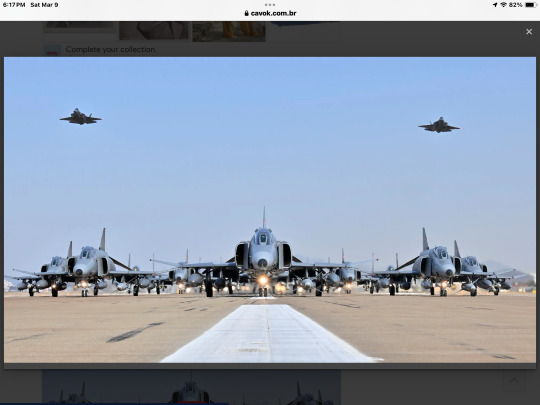
The term "elephant walk" dates back to World War II, when large fleets of Allied bombers gathered for missions containing up to 1,000 aircraft. It means a coordinated demonstration of power and military preparation.
youtube
The Chief of Staff of the Air Force, General Lee Young-su, emphasized the need of the South Korean Air Force to inspire confidence in the public and deter potential opponents. The "Elephant Walk" demonstrated RoKAF's readiness to respond decisively to any provocations.

"I give a warm applause to the Phantoms who protected the Republic of Korea for 55 years, and to the 'Ghost Men' who shared the ups and downs with the Phantoms," added Lee Young-soo.
The F-4 was first introduced in Korea in 1969. RoKAF explained that it was able to dominate the North Korean Air Force by introducing the F-4D, the new most powerful aircraft in the world at the time. Until the KF-16 entered service in 1994, the F-4 served as the main fighter representing the Air Force of the Republic of Korea, which even operated up to about 220 Phantoms, including the improved F-4E and the RF-4C reconnaissance aircraft.
Most Phantoms are retired and only about 10 F-4Es remain active. All of them will be retired in June of this year.
North Korea's recent calls for mobilization for combat highlight the ongoing tensions in the region, with Pyongyang often seeing negotiations for joint exercises between South Korea and the US as provocations.
Tags: Military AviationElephant WalkMcDonnell Douglas F-4 Phantom IIROKAF - Republic of Korea Air Force/South Korean Air Force
Sharing
tweet
Fernando Valduga
Fernando Valduga
Aviation photographer and pilot since 1992, he has participated in several events and air operations, such as Cruzex, AirVenture, Dayton Airshow and FIDAE. He has works published in specialized aviation magazines in Brazil and abroad. He uses Canon equipment during his photographic work in the world of aviation.
Related news
MILITARY
F-35A fighter officially certified to launch the B61-12 nuclear bomb
09/03/2024 - 14:00
MILITARY
Indonesia updates F-16 AM/BM combat jets to the EMLU standard
09/03/2024 - 12:30
HELICOPTERS
After three months, V-22 Osprey aircraft are released to fly again
09/03/2024 - 11:28
MILITARY
KAI will develop FA-50 single-seat light combat jet
08/03/2024 - 19:17
HELICOPTERS
VIDEO: MH-60R Seahawks helicopters enter service in the Indian Navy
08/03/2024 - 16:00
MILITARY
Colombian Air Force receives augmented virtual reality simulators to train T-6C plane pilots
08/03/2024 - 14:00
23 notes
·
View notes
Text
I had been impressed, on coming to the Painted Desert because the earth looked like something which had already become extinct. Was it really so—could nothing be done about these regions? Not much, he thought. They might stay that way for millions of years. There were chemicals in the earth, an acid condition, which made it impossible to grow things in such places. "But I'll tell you," he added, "it's my belief that the tendency is in the other direction." "What do you mean?" I asked. "I mean that the earth may take millions of years to notice the change, but it's going on steadily. There's something in the air which feeds the earth. You look at a sunbeam . . . you know how you see things floating in the air. Something is always dropping back to earth . . . little particles which nourish the soul. Now the Painted Desert . . . I've been over a good part of it. There's nothing there to hurt you. It isn't all explored yet, of course. Even the Indians don't know it all." He went on to talk about the colors of the desert, how they had been formed through the cooling of the earth; he talked about prehistoric forms of life embedded in the rocks, about a plateau somewhere in the midst of the Desert which an aviator had discovered and which was full of tiny horses. "Some say they were the little horses brought in by the Spaniards years ago, but my theory is that there's something lacking in the water or the vegetation which stunts their growth." He spoke of the horses with such vivid imagery that I began to see in my mind's eye the original prehistoric beast, the eohippus, or whatever it's called, which I had always pictured as running wild and free on the plains of Tartary. "It's not so strange," he was saying, "You take in Africa, they've got pygmies and elephants and that sort of thing." Why elephants? I asked myself. Perhaps he had meant something else. He knew what an elephant was like, I know, because in a little while he got to talking about the bones and skeletons of great animals which had once roamed the country—camels, elephants, dinosaurs, sabre-toothed tigers, etc., all dug up in the desert and elsewhere. He spoke about the fresh meat found on the frozen mastodons in Siberia, Alaska and Canada, about the earth moving into strange new zodiacal realms and flopping over on its axis; about the great climatic changes, sudden, catastrophic changes, burying whole epochs alive, making deserts of tropical seas and pushing up mountains where once there was sea, and so on. He spoke fascinatingly, lingeringly, as if he had witnessed it all himself from some high place in some ageless cloak of flesh.
Henry Miller ֍ The Air-Conditioned Nightmare (1945)
3 notes
·
View notes
Text

Airbus A330-300 Qantas Airways
Registration: VH-QPB Named: Tennant Creek Type: A330-303 Engines: 2 × GE CF6-80E1A3 Serial Number: 558 First flight: Oct 10, 2003
Qantas Airways is Australia's flagship airline and the largest airline in terms of fleet size, number of international flights and destinations. Founded in November 1920 and started operating international passenger flights in May 1935, it is the third oldest operating airline in the world. The airline is based in Mascot, near its main airport, Sydney, and is one of the founders of the Oneworld alliance.
The airline is popularly known as The Flying Kangaroo. The history of this symbol dates back to 1944, after the route across the Indian Ocean was officially named the Kangaroo Route, and the profile of this Australian endemic was painted on board under the cockpit of a Consolidated LB-30 Liberator I aircraft.
Qantas chose this name to refer to commercial passenger air routes running between Australia and the United Kingdom through the Eastern Hemisphere because of its similarity to the unique way kangaroos travel. By today's standards, the short flights of aircraft of that era resembled kangaroo jumps and were used to cover long distances. Today, this phrase is a trademark of the airline and is traditionally used by Qantas for all flights from Australia to the UK.
The initial design of the new brand was based on the silhouette of a kangaroo depicted on an Australian penny coin. In 1947, the kangaroo "grew" wings, and the popular name "Flying Kangaroo" was fixed for it. The kangaroo silhouette acquired its modern look in 2016.
Poster for Aviators aviaposter.com
6 notes
·
View notes
Text
133 aircraft grounded in India, order book with scope to grow
When the parliament is in session in India, one of the best sources of data and information is the transparency with which the questions are answered and shared in the public domain. In response to a question asked by Mr. Parimal Nathwane, who is a Member of the Rajya Sabha, the upper house of Parliament; the Minister of State for Civil Aviation informed the parliament about Number of aircraft…
#Grounded planes in India#Indian Aviation#Indian aviation blogs#Indian aviation news#Old planes#Parliamentary question
0 notes
Text



India vs Afghanistan World Cup 2023: How to Watch Live Streaming 🏏🏏🏏
🏏Cricket registration : https://cricket99.in/
⭐Full article : https://ipl201.com/cricketnews/1527/
India is geared up for a thrilling clash against Afghanistan in the World Cup 2023, and fans around the globe are eager to catch the action live. Here's what you need to know about the India vs Afghanistan match in the World Cup 2023: Match Date: The India vs Afghanistan match will be held on Wednesday, October 11. Venue: The match will take place at the Arun Jaitley Stadium in New Delhi. Match Time: Set your clocks for 2 PM IST (1:30 PM for the toss) for the exciting showdown. TV Broadcast: Catch the action on the Star Sports Network, ensuring you don't miss a moment of the match. Live Streaming: For those who prefer to watch online, the match will be streamed live on Disney+ Hotstar, bringing the excitement right to your screens.
#cricket#india#viratkohli#ipl2023#dream11#cricketid#ipl#gugobet#ashwin#aviator#asian games 2023#asia cup 2023#world cup#cricket news#world cup 2023#sports news#indian cricket team
0 notes
Text
Martin-Baker is a company that for more than 70 years has specialized in engineering the ejection seats utilized a majority of the world’s fighter jets. They have saved thousands of lives that in otherwise would likely have been lost. Martin-Baker revolutionized an industry that for a long time had been characterized by low survival rates, and in doing so have created an exclusive club very few are able to join, one that unifies aviators in a way that will never be taken away. I��d say only the best of the best are allowed in, but that wouldn’t be true.
A lifetime membership to the Martin-Baker Ejection Tie Club is awarded to those who have ejected from an aircraft using a Martin-Baker ejection seat, which as a result has saved their life.
These are (some of) their stories…
DAVE “BIO” BARANEK
EJECTEE #4813
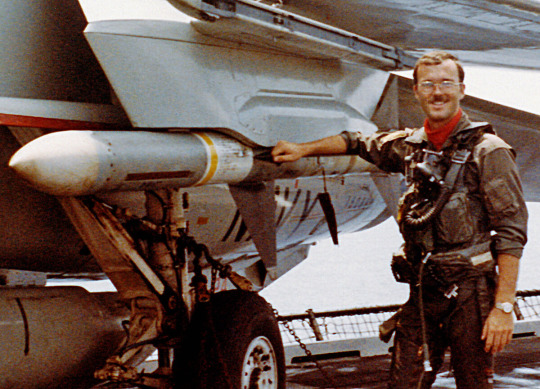
For me and my pilot, 19 December 1981 was the date of a memorable excursion in a Martin-Baker ejection seat following a split-second decision to eject. I was an F-14 RIO and we were landing on an aircraft carrier in the Indian Ocean when things went wrong. I was fairly new, but I realized we were in trouble, and when my pilot said “Eject! Eject!” I pulled the lower handle. It happened in the blink of an eye, and only later could I be philosophical about it, to think about leaving the familiar and comfortable cockpit for the unknown. Thanks to the Martin-Baker MK-GRU7A seat my pilot and I survived in excellent condition and have enjoyed 38 (and counting) more years of living, flying, families, and everything else. I am thankful for the skilled US Navy technicians who maintained our equipment and the people of Martin-Baker who provided the seat that saved my life.
CDR. J. R. DAVIS
EJECTEE #4004

Martin-Baker – Thank you for the rest of my life. On 20 March 1987 my F-14A ran away with me as an unwilling passenger. Fire in the environmental control system burned through the flight controls. The airplane started un-commanded pitch oscillations and the last nose down excursion made it clear that I had to eject. My ride in F-14 BuNo 161614 ended 15 seconds before the crash with a Martin-Baker ejection seat and a parachute descent. My wife Sweet Denyse thanks you too.
CDR. TODD A PARKER
EJECTEE #4822

“It was a spring day in 1995 about 200 miles SW of Sicily. The USS Theodore Roosevelt was heading up to the Adriatic to enter the Bosnia conflict. As we expected combat, we needed to make sure as many jets as possible were up and ready so the past few days had been a maintenance blitz. We were conducting a post-maintenance check flight on our F-14 Tomcat, which the jet passed with flying colors.
After the flight we were heading back to the carrier, when suddenly the jet began bucking like a bronco – negative 2 Gs followed by 5 Gs, back and forth for about 1 minute, then it suddenly stopped. We couldn’t figure out what was wrong, but another aircraft joined up and noticed a mismatch in our horizontal stabilators. After two more events similar to the first, each time with the jet losing about 5000 feet, the jet suddenly pitched over into a negative 2 G dive and started rolling uncontrollably. I looked at the altimeter and it read 3000 feet so I pulled the handle. After the loud flash and bang, I found myself under the parachute, and looked down just in time to see the jet hit the water �� what turned out to be just 4 seconds after we ejected. We were both safely under parachute, with only minor injuries but alive. We were plucked out of the water by helos from the carrier about 45 minutes later. –
Thanks to Martin-Baker and my Parachute Rigger, I am still alive, and by being able to “live to tell” about our story a major mechanical problem was found. All F-14 Tomcats were subsequently inspected and the same problem was found on dozens of other jets, so Martin-Baker not only saved my life but likely prevented many other aviators from (at best) joining the Tie Club themselves or at worst losing their lives. It was just a month later that a high school friend who heard I was deployed wrote me a letter…We’ve now been married 17 years with two wonderful children. Thank you Martin-Baker!!!
#I chose some F-14 ones cause they’re relevant#the stories go way back too#you can search through their catalogs and read hundreds of accounts from all kinds of people who flew all kinds of aircraft#they have a search bar#aviation#Martin-Baker Ejection Tie Club#have this to keep you entertained while I am flying these next two days… not far but reception will be nonexistent onboard#two seperate flights to clarify#I’m not going anywhere crazy sorry lol#top gun#top gun maverick#research#(kinda)#info#stories#text#history#I like planes#airplane history!#just a little thing i wrote#reference
16 notes
·
View notes
Text
Fanfic Update: You Can Be My Wingman Anytime
New chapter is up! Let the drama begin!
Fanfic Summary: After the mission in the Indian Ocean, life continues for the flyboys at the Miramar Naval Air Station. They’ve got jobs to do. Mav still can't let go of the past. Ice is worried if he can continue flying with Slider. And most of all and in between all of this, Ice and Mav begin to hang out a lot and start falling for each other more and more. And as if that wasn't enough there's Charlie, it's the 80s and they're in the Navy.
Rating: M.
Pairing: Icemav.
Chapter Notes: Charlie and Mav have a fight (over one certain naval aviator).
CLICK HERE TO READ!
#top gun#icemav#pete maverick mitchell#top gun maverick#top gun 1986#tom iceman kazansky#top gun fanfic#top gun fanfiction#fanfiction#icemav fanfic#icemav fanfiction#writing#writers on tumblr#pete maverick mitchell x tom iceman kazansky#maverick x iceman#iceman x maverick#ice x mav#mav x ice
15 notes
·
View notes
Text
'''It's one of the biggest mysteries in modern aviation history. In March 2014, Malaysia Airlines flight MH370 took off from Kuala Lumpur International Airport en route to Beijing and lost communication about 38 minutes into the flight. Military radar tracked the aircraft as it veered off course before the signal (and the plane) disappeared somewhere over the Andaman Sea and Indian Ocean.
All 12 crew members and 227 passengers were presumed dead, and search-and-rescue efforts yielded no signs of the doomed plane apart from a few pieces of debris that washed up on coastal shores months later. Now, scientists have partially reconstructed the possible origin and drift path of that debris via a novel means: extracting data about ocean temperatures stored in shells of barnacles, according to a new paper published in the journal AGU Advances.''''
#unsolved mysteries#malaysia airlines flight 370#airplane crashes#airplane disasters#disasters#barnacles
20 notes
·
View notes
Text
My New Book About three Brave Americans

On August 25th 1914, a group of young Americans joined the Foreign Legion and “with a cowboy swing” marched through Paris, wildly cheered by the crowd. They were the first Americans in the Great War. I have written the intimate story of three of those young men: • David Wooster King - a 21-year-old dropout from Harvard and son of a rich businessman whose family can be traced back to Mayflower. • Alan Seeger - a 26-year-old poet and a dreamer from New York and a family of highly educated intellectuals. His ancestors too, can be traced back to start of the American nation. • Eugene James Bullard - a 19-year-old entertainer and boxer from Columbus, Georgia. His father was born a slave and his mother was Creek Indian. King ended up as an officer in the US Army chasing German spies in Switzerland in 1918. Later, he became a modern global adventurer, met rulers across the world and was sent to Casablanca in 1941 as the very first OSS agent reporting to President Roosevelt. Eugene Bullard too survived the war years. He was wounded at Verdun and invalided out of the French Army but despite all odds he became the world’s first black aviator. After the war, he married a young French woman and settled in Paris where he opened a bar. In the roaring 20s he was surrounded by every artist and intellectual of the day from Hemingway to Louis Armstrong. Bullard fought for the French again in 1940 before he was wounded and had to flee to New York with his two children. Here he was ignored except by the first lady Eleanor Roosevelt. The French never forgot him, and Bullard ignited the eternal flame at the Arc de Triomphe in Paris in 1954 and was kissed on both cheeks by President Charles de Gaulle.
The third legionnaire, Seeger, was not so lucky as his two comrades. He was killed during the Battle of the Somme on July 4, 1916. However, six weeks earlier, he wrote the famous poem, ‘I Have A Rendezvous with Death’ which was to become his legacy. President Kennedy’s daughter Caroline recited it for her father six weeks before his fateful trip to Dallas in November 1963, and the poem has since inspired a line of American presidents during the 20th century. It has become an indestructible poetic lifeline linking France and the United States of America. The three young Americans, rooted in the nation, each has an amazing story to tell. But when their adventures are brought together we get a three-dimensional perspective on how America broke its isolation from the world and started to unite as a nation during the 20th century. The three men represent different pillars of the American soul, and their lives and dreams symbolize the story of how America became modern and remind us of the strong historic ties between France and America. Most of all, this book is a fantastic saga full of brave men, great adventures and terrific sacrifices that bring hope and a new direction in a time of human division.
You can buy the book at most online bookshops and at my publisher Pen & Sword.
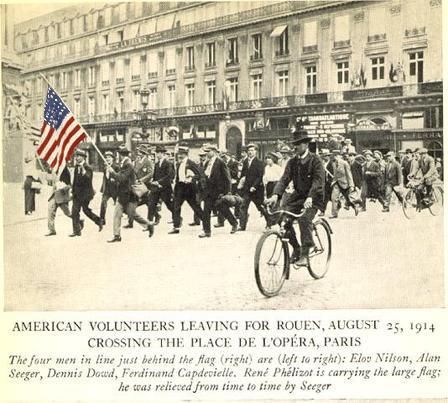
20 notes
·
View notes
Text

IMAGES: USAF sends B-52 bombers to Indian Ocean base
Fernando Valduga By Fernando Valduga 03/26/2024 - 16:00 in Military, War Zones
U.S. Air Force B-52H Stratofortresses bombers were deployed on March 22 at the Diego Garcia Naval Support Center in the Indian Ocean.

The Bomber Task Force deployment offers the U.S. Air Force Global Attack Command a presence in the Indo-Pacific, with relatively easy access to the Middle East as well.
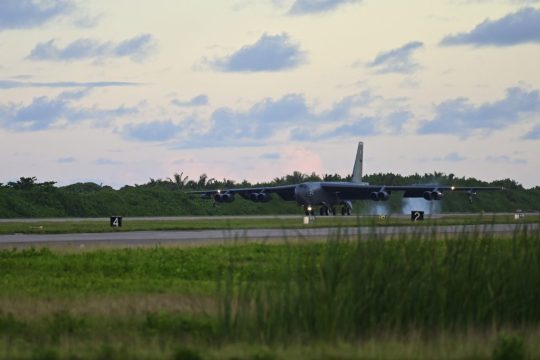
The B-52s fled to Diego Garcia from Barksdale Air Base, Louisiana, after a 30-hour direct flight. This is the first time that USAF announces a Bomber Task Force for Diego Garcia - a small island that is part of the British Indian Ocean Territory that serves as a fundamental base for the U.S. and UK military, which has hosted American troops since the 1970s. The B-1 landed there in 2021, and the last time a B-52 landed there was in 2020.
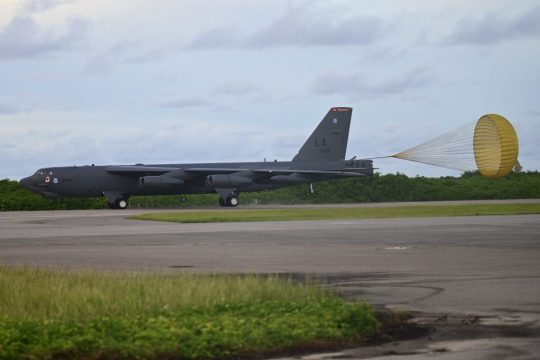
"This deployment aims to improve the readiness and training needed to respond to any potential crisis or challenge around the world, demonstrating the credibility of our forces to face a global security environment that is more diverse and uncertain than at any other time in recent history," the Pacific Air Forces Command (PACAF) said in a statement.

Although the island is in the area of responsibility of the U.S. Indo-Pacific Command, the U.S. Air Force used the island in the past as a base to send bombers to the U.S. Central Command's area of operations.
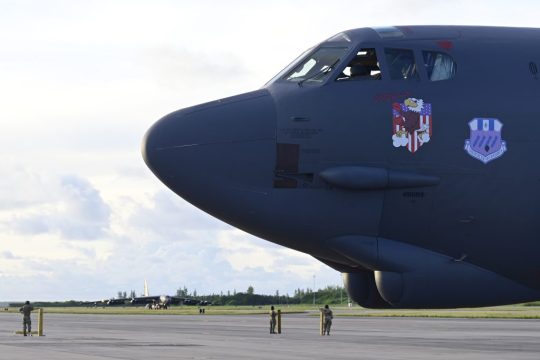
This latest deployment of PACAF bombers follows in the footsteps of the B-52 of Minot Air Base, North Dakota, deployed in Guam at the end of January and operating there until March 6.
Tags: Military AviationBoeing B-52H StratofortressBTFUSAF - United States Air Force / U.S. Air ForceWar Zones - Indo-Asia-Pacific
Sharing
tweet
Fernando Valduga
Fernando Valduga
Aviation photographer and pilot since 1992, he has participated in several events and air operations, such as Cruzex, AirVenture, Dayton Airshow and FIDAE. He has works published in specialized aviation magazines in Brazil and abroad. He uses Canon equipment during his photographic work in the world of aviation.
Related news
HELICOPTERS
Boeing guarantees almost $100 million to modernize the MH-47G Special Operations Chinooks
26/03/2024 - 14:00
A SCALP-EG cruise missile in a Ukrainian Su-24.
MILITARY
Allies prepare to send 5,000 of their best cruise missiles to Ukraine
26/03/2024 - 13:00
MILITARY
USAF will receive five EA-37B Compass Call electronic attack aircraft in 2024
26/03/2024 - 11:00
INTERCEPTIONS
USAF B-1B bombers, on a mission in northern Europe, are intercepted by Russian fighters
26/03/2024 - 09:00
MILITARY
Saab receives order for Arexis sensor set for German Eurofighters
26/03/2024 - 08:21
A Stealth F-117A fighter aircraft refuels from a KC-10 Extender aircraft from the 22ª Air Refueling Wing during Operation Desert Shield.
MILITARY
"Retired" F-117 jets will be certified for REVO with the KC-46 Pegasus
25/03/2024 - 21:57
16 notes
·
View notes